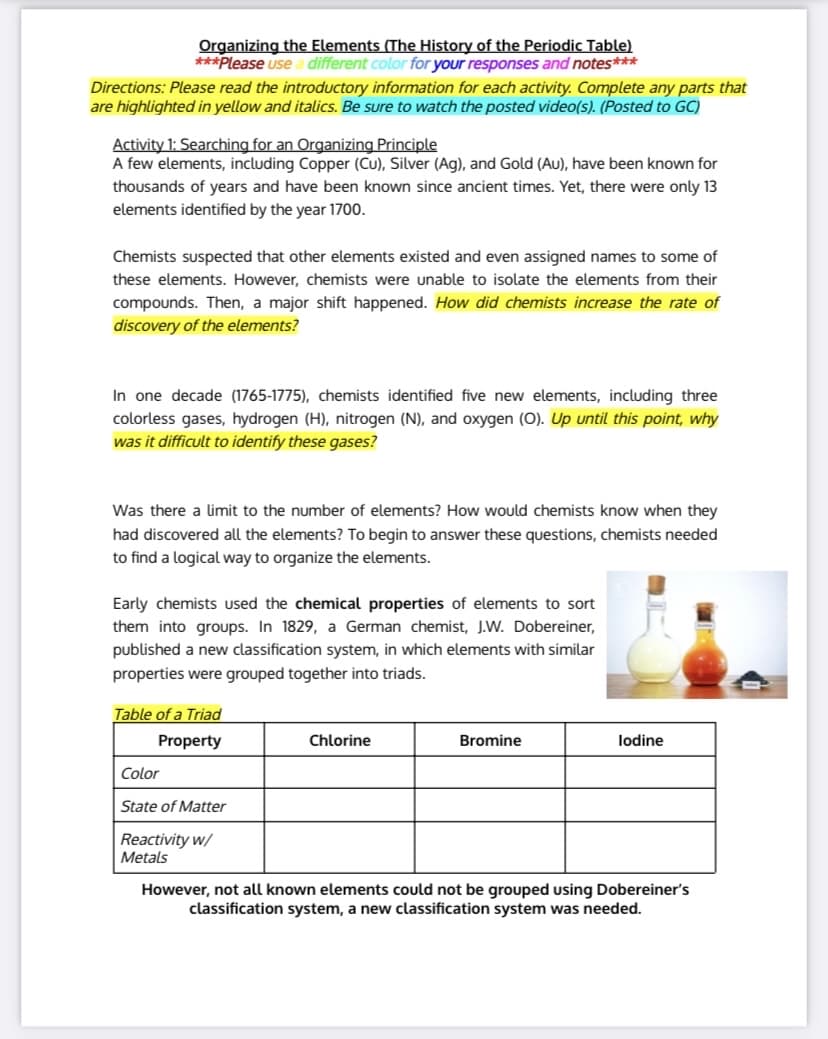compounds. Then, a major shift happened. How did chemists increase the rate of discovery of the elements? In one decade (1765-1775), chemists identified five new elements, including three colorless gases, hydrogen (H), nitrogen (N), and oxygen (0). Up until this point, why was it difficult to identify these gases? Was there a limit to the number of elements? How would chemists know when they had discovered all the elements? To begin to answer these questions, chemists needed to find a logical way to organize the elements. Early chemists used the chemical properties of elements to sort them into groups. In 1829, a German chemist, J.W. Dobereiner, published a new classification system, in which elements with similar properties were grouped together into triads. Table of a Triad Property Chlorine Bromine lodine Color State of Matter Reactivity w/ Metals
States of Matter
The substance that constitutes everything in the universe is known as matter. Matter comprises atoms which in turn are composed of electrons, protons, and neutrons. Different atoms combine together to give rise to molecules that act as a foundation for all kinds of substances. There are five states of matter based on their energies of attraction, namely solid, liquid, gases, plasma, and BEC (Bose-Einstein condensates).
Chemical Reactions and Equations
When a chemical species is transformed into another chemical species it is said to have undergone a chemical reaction. It consists of breaking existing bonds and forming new bonds by changing the position of electrons. These reactions are best explained using a chemical equation.

Trending now
This is a popular solution!
Step by step
Solved in 2 steps









